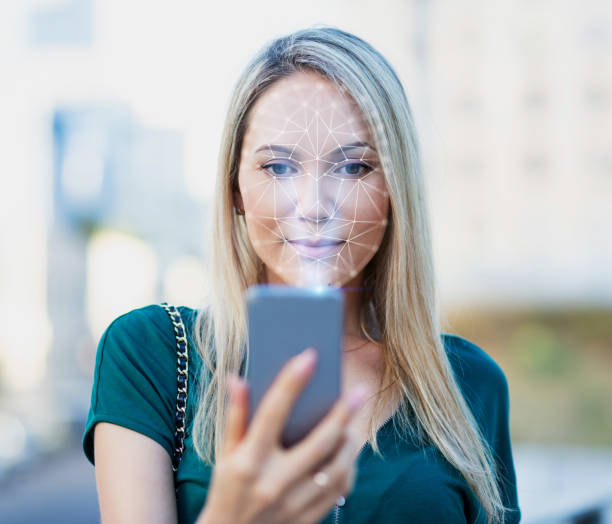Businesses face insecurities like spoofing attacks and identity theft in this digital era. Criminals use modern technology to facilitate their illicit actions. In this age of complex digital crimes such as identity theft and spoofing attacks onboard, an electronic solution can only be the solution. A biometric solution face recognition eradicates the issue of spoofing and identity theft as the face scan identity of an individual.
A biometric solution identifies a person’s identity based on unique physiological traits. It reduces the risk of identity theft and makes businesses and organizations secure. As per the report, the market of biometric usage is forecasted to be nearly 43 billion to 83 billion U.S. dollars in the year 2022-2027.
To enhance security measures further, businesses can consider implementing a multifaceted approach, incorporating not only biometric solutions like face recognition but also integrating free QR code authentication. This additional layer of protection can fortify digital defenses by ensuring secure and verifiable transactions, thus safeguarding against potential threats such as spoofing attacks and identity theft in the ever-evolving landscape of digital crimes.
What is Biometric Facial Recognition?
Biometric facial recognition is a kind of technology that identifies or verifies a person’s identity through video, image, selfie, or real-time face detection. It captures and analyzes facial nodes to verify a person’s identity. Facial nodes may include facial geometry such as the color of eyes, skin color, contour of facial bones, distance between chin and forehead, and distance between the two ear lobes. Biometric face scanners identify these facial characteristics as digital face prints. Biometric face recognition is primarily used to access an organization, a system, or an application; it acts as a security procedure. Mainly, businesses use face recognition technology to measure ‘Know Your Customer effectively’ KYC compliance.

How Does the Face Identification Process Work?
Face identification uses digital technology to generate and obtain images. Biometric face scanners use images to record facial patterns, which are stored as face prints to be matched during identity verification. Automated mathematical and digital patterns work behind face scanners and accurately verify a person’s identity. The biometric facial recognition process is used in two ways: for registration while having a client onboard and logging in after successful onboarding as follows;
- Registration
Initially, before onboarding a customer, a facial recognition system addresses a face and associates it with an identity. Thus, it is registered in the database. It is digital onboarding in the business where facial recognition is used to register clients.
- Login Credential
Biometric facial recognition serves as logging credentials, as in organizations, after successfully registering a customer onboard, face scanning allows customers to have a successful login. It makes the organization safe by allowing only registered and authentic customers to be there. It is mainly used in companies to monitor the employee’s attendance. It is hassle-free as employees must face the camera and verify themselves.
Biometric Facial Recognition Uses Cases
Biometric face recognition is mainly used for verification or authentication processes. The following are the primary use cases of this technology;

- Two-factor authentication
Biometric facial recognition scanners are used as two-factor authentication. It provides an extra security layer in the login process.
- Smartphone Acess
Smartphones have utilized the feature of biometric face scans. It provides users with easy access to applications. It has reduced the use of passwords, which may lost or regenerated, which leads to insecurities.
- As Logging Credential
Many platforms use facial recognition scanners for biometric authentication to protect their organization from financial terrorists.
- Entrance
Facial scanners are mainly used at the entrance gates of organizations, institutions, and offices. It provides them with a security layer and prevents future risk.
- Payment Method
Biometric systems are now used in many online and physical stores to access authentic and authorized clients. It provides security against criminals and financial losses.
- Travel Agencies
Many airports use facial recognition to verify passports. It is hassle-free and saves time. It reduces the effort of standing in large queues for travelers as well.
Key Benefits
- Fast Processing
Automated biometric facial verification scanners employ artificial intelligence (AI) and machine learning (ML) algorithms; they can identify several individuals quickly and provide accurate results.
- Security
Biometric face recognizers filter out unauthentic clients and allow only real clients on board. It makes organizations secure and provide an extra layer of security against the criminals.
- Enhanced user Experience
Facial scanning has enhanced the customer’s experience as it is frictionless. It is fast and automated, thus allowing clients to have quick verification solutions.

Final Words
The ratio of cybercrimes has been reduced using biometric facial recognition as a face scan identity. It has eliminated the risk of identity theft and spoofing attacks. Businesses use biometric face scanners initially for registration and then as credentials for logging in. It provides two-factor authentication and is used in most industries nowadays.

